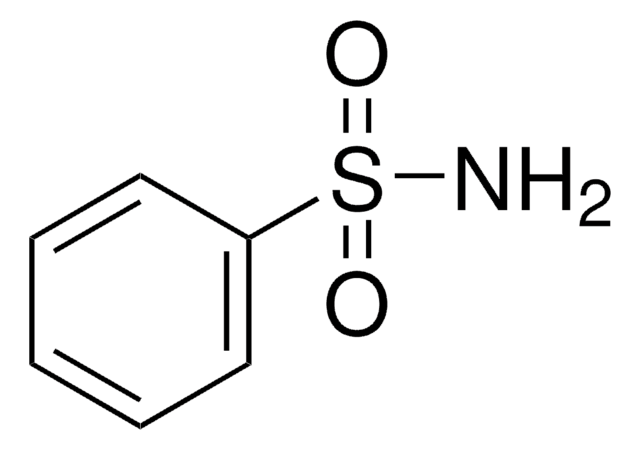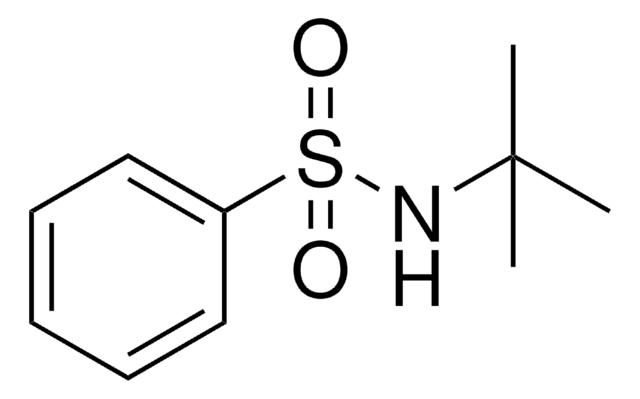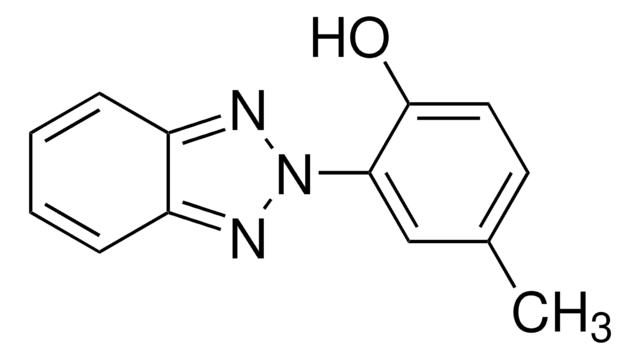All Photos(1)
About This Item
Linear Formula:
C6H5SO2NH(CH2)3CH3
CAS Number:
Molecular Weight:
213.30
EC Number:
MDL number:
UNSPSC Code:
12352100
PubChem Substance ID:
NACRES:
NA.22
Recommended Products
vapor pressure
0.35 mmHg ( 150 °C)
Quality Level
Assay
99%
form
liquid
refractive index
n20/D 1.525 (lit.)
bp
314 °C (lit.)
density
1.15 g/mL at 25 °C (lit.)
SMILES string
CCCCNS(=O)(=O)c1ccccc1
InChI
1S/C10H15NO2S/c1-2-3-9-11-14(12,13)10-7-5-4-6-8-10/h4-8,11H,2-3,9H2,1H3
InChI key
IPRJXAGUEGOFGG-UHFFFAOYSA-N
Related Categories
Signal Word
Warning
Hazard Statements
Precautionary Statements
Hazard Classifications
Aquatic Chronic 3 - STOT RE 2
Storage Class Code
10 - Combustible liquids
WGK
WGK 1
Flash Point(F)
235.4 °F - closed cup
Flash Point(C)
113 °C - closed cup
Personal Protective Equipment
dust mask type N95 (US), Eyeshields, Gloves
Choose from one of the most recent versions:
Already Own This Product?
Find documentation for the products that you have recently purchased in the Document Library.
M J Strong et al.
Neurotoxicology, 12(3), 415-425 (1991-01-01)
Repeated monthly intracisternal inoculations of N-butyl benzenesulfonamide induced a chronic, slowly progressive myelopathy in young adult New Zealand white rabbits that was manifested by hyperreflexia, spasticity, hypertonia, gait impairment and altered tonic immobility responses. The neuropathological features consisted of scattered
C V Rider et al.
Neurotoxicology, 33(6), 1528-1535 (2012-07-25)
N-Butylbenzenesulfonamide (NBBS) is widely used as a plasticizer in polyacetals, polyamides, and polycarbonates and has been found in ground water and effluent from wastewater treatment sites. The compound is lipophilic and distributes rapidly to the brain but also clears rapidly
P Duffield et al.
Journal of analytical toxicology, 18(7), 361-368 (1994-11-01)
The plasticizer, n-butylbenzenesulfonamide (NBBS), is reported to be neurotoxic when inoculated intracisternally or intraperitoneally into rabbits. Because NBBS is commonly used in the production of polyamide (nylon) plastics and is soluble in water, the disposal of NBBS-containing plastics in landfill
Preliminary observations on the in vitro toxicity of N-butylbenzenesulfonamide: a newly discovered neurotoxin.
V R Nerurkar et al.
Annals of the New York Academy of Sciences, 679, 280-287 (1993-05-28)
Sonja Schleich et al.
Planta medica, 72(9), 807-813 (2006-06-20)
Extracts from Pygeum africanum, Serenoa repens and Cucurbita pepo are used in the treatment of benign prostatic hyperplasia (BPH) and prostate cancer (PCa). The activity of the androgen receptor (AR) is known to control growth of the prostate. Here, we
Our team of scientists has experience in all areas of research including Life Science, Material Science, Chemical Synthesis, Chromatography, Analytical and many others.
Contact Technical Service









